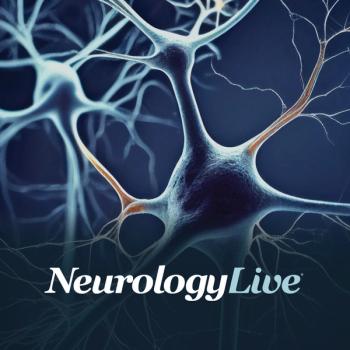
Real-World Data Highlight Increased Safety Events of Dopamine D2 Receptor Antagonists in Pediatric Tourette Syndrome
Key Takeaways
- D2RA treatment in TS patients is linked to higher adverse event rates, including sleep disorders, OCD, metabolic issues, depression, and suicidal ideation.
- The study used a retrospective analysis of health records from 2011 to 2021, comparing D2RA-exposed and nonexposed cohorts.
A new study reported that children and adolescents with Tourette syndrome on dopamine D2 receptor antagonists had higher rates of psychiatric and metabolic adverse events than those unexposed.
New findings from a real-world data analysis presented at the
During an 18-month follow-up, patients in the D2RA-exposed cohort were more likely to experience sleep disorders (7.7% vs 2.4%; standardized mean difference [SMD], 0.24), obsessive-compulsive disorder (6.2% vs 2.6%; SMD, 0.18), mild (15.0% vs 3.9%; SMD, 0.39) and moderate (6.9% vs 1.1%; SMD, 0.30) metabolic adverse events, and depression (6.3% vs 2.7%; SMD, 0.18) than those unexposed. Presented by lead author Donald L. Gilbert, MD, MS, pediatric movement disorders and TS specialist at Cincinnati Children's Hospital Medical Center, the exposed cohort also had higher rates of suicidal ideation, behavior, or attempt (5.8% vs 2.1%; SMD, 0.19).
This retrospective study utilized health records from the TriNetX Dataworks-USA Network, including data from children and adolescents aged 6 to 17 years with a diagnosis of TS recorded between 2011 and 2021. Researchers divided the patients into 2 groups: those who had received a D2RA prescription and those who had not. The study included 1684 individuals matched 1:1 by age group, index year, region, and sex (median age, 13 years; boys, 73.9%) to ensure comparability.
READ MORE:
Each patient in the analysis had at least 1 clinical encounter during both the baseline and 18-month follow-up periods. The analysis incorporated a validated pediatric comorbidity index to calculate the baseline comorbidity index, with higher scores indicating increased hospitalization risk. Incident adverse events, identified using diagnosis codes, anthropometric data, and laboratory results, were assessed during follow-up, and cohorts were compared using SMD.
All told, the mean baseline comorbidity index was higher in the D2RA-exposed cohort compared with the nonexposed cohort (3.4 [SD, 3.5] vs 2.1 [SD, 2.5]; SMD, 0.44). Authors also noted that movement-related AEs were infrequent but observed in the D2RA-exposed cohort, with dystonia reported in 0.5% (n = 8), akathisia in 0.2% (n = 3), and tardive dyskinesia in 0.1% (n = 1) of participants; no cases were reported in the nonexposed cohort.
In an additional real-world study presented by Gilbert at CNS 2025, investigators evaluated health care resource utilization (HCRU) in children and adolescents with TS treated with D2RAs. Researchers used the same data cohorts from the prior analysis, with incidence rates and risk ratios for all-cause and TS-related HCRU calculated over the follow-up period. Among the matched participants from the previous study, the most common first-month D2RAs reported were risperidone (40.3%) and aripiprazole (30.4%).2
Compared with the non-D2RA cohort, the D2RA cohort had higher all-cause health care resource utilization. Findings showed that emergency care visits were 1.7-fold higher (38.7 vs 22.6 per 100 person-years [PY]), inpatient encounters were 2.4-fold higher (25.1 vs 10.3 per 100 PY), and outpatient visits were 2.0-fold higher (1552.3 vs 778.7 per 100 PY) in the D2RA cohort. TS-related HCRU also increased in the D2RA cohort, including 4.4-fold higher emergency visits (6.5 vs 1.5 per 100 PY), 3.3-fold higher inpatient encounters (6.2 vs 1.9 per 100 PY), and 2.5-fold higher outpatient visits (386.2 vs 153.9 per 100 PY).
REFERENCES
1. Gilbert D, Isaacs D, Swindle J, et al. Real-world adverse event profile and comorbidity index in children and adolescents with Tourette syndrome treated with dopamine D2 receptor antagonists. Presented at: CNS 2025; October 8-11, 2025; Charlotte, NC. Abstract 189.
2. Gilbert D, Isaacs D, Swindle J, et al. Increased health care resource utilization in children and adolescents with Tourette syndrome (TS) treated with dopamine D2 receptor antagonists/partial agonists (D2RAs): an electronic health records database analysis. Presented at: CNS 2025; October 8-11, 2025; Charlotte, NC. Abstract 179.
Newsletter
Keep your finger on the pulse of neurology—subscribe to NeurologyLive for expert interviews, new data, and breakthrough treatment updates.


































